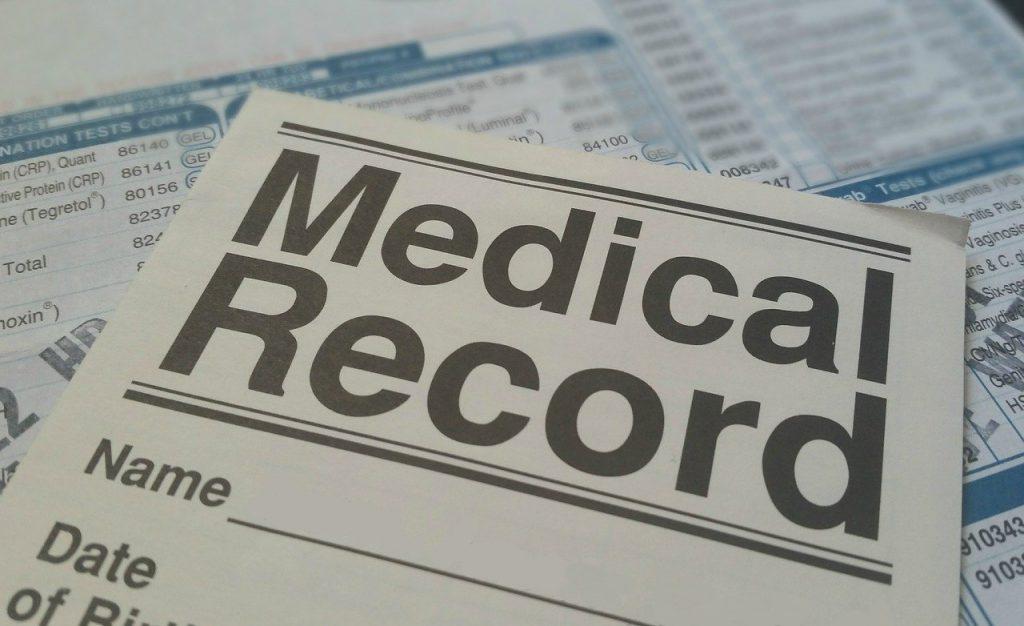This isn’t the time or place for us to enter the Paper Health Records vs. Electronic Health Records (EHR) debate.
Although, as an EHR company, we won’t lie to you – we think EHRs are pretty great.
However, we know there are plenty of providers that enjoy success using a paper health records system.
For many, their admittedly outdated operation works just fine. Why commit to the unknowns of an EHR implementation when managing things offline is still viable?
And we get that – you won’t find us advocating for fixing things that aren’t broken.
Things have changed, though. As with so many things, the coronavirus emergency has greatly impacted the present and future of the healthcare industry.
We are witnessing healthcare transform in real-time. Suddenly, remote and virtual care is a top priority to manage the risk of COVID-19.
As this crisis persists, health organizations using paper health records are now forced to reckon with a second technological update: telehealth.
There is still so much uncertainty surrounding the pandemic we find ourselves in, but we can be sure about one thing – telehealth is here to stay.
What does that mean for the organizations currently using a paper system? Well, we’d be lying if we said that we had all the answers for you.
What we can offer is some measured and forward-thinking insight into the choices that care providers on paper records will soon have to face.
Navigating Telehealth’s New Demand
It has been remarkable to see how the global health care system has mobilized to meet the unprecedented challenge of the COVID-19 crisis.
Technology companies have turned their focus and resources to providing telemedicine services. Certain federal restrictions for virtual care have been lifted to expand patient access to telehealth. Care providers have quickly adopted video conferencing solutions to deliver safe, remote treatment to their patients.
Organizations using paper health records may feel outpaced or unsettled by this technological commotion.
The traditional, tangible way of doing business is no longer an option for such organizations.
Consider the providers who are still totally undigitized. Think physical appointment books, filing cabinets stuffed with folders, doctors physically writing prescriptions.
Holding appointments via video conferencing software is a pretty big jump for such an organization to make, especially overnight.
Over the last month or so, certain third-party services have emerged as popular video conferencing options for all different industries.
Many have found success with these solutions, even with the enormous increases in traffic worldwide. However, many others have already experienced security vulnerabilities and even large scale data breaches.

This is all to say that we are still in the early days of COVID-19, as well as our industry’s adjustment to the new realities of practicing medicine in a pandemic. Both care providers and telehealth service providers are figuring out how to deliver secure, functional virtual care to patients on the fly.
It can be helpful to remember that a global event like the coronavirus, and all of its repercussions, usually happens in waves.
For example, the need to manage the risk of COVID-19 prompted an immediate reliance on virtual care. That wave is still currently washing over us.
Companies will learn from the mistakes of others and their own trials and errors. A second wave of more secure, more functional, more pandemic-tested video conferencing solutions will follow. And then another, more refined surge will follow that one.
So, if you are a paper-based organization and feel like the telehealth boom risks leaving you in the dust, you can breath a sigh of relief.
You have not been left behind yet. In fact, this moment presents a unique incentive for care providers using paper health records to embrace digitization.
As telehealth’s place in healthcare evolves before our eyes, consider this the push you have been waiting for.
Modernizing Medicine
We can’t tell the future – there are still so many unknowns surrounding telehealth, healthcare, and well, everything else.
What we can do is identify the indicators of telehealth’s seemingly inevitable expansion.
For example, there is the fact that there was a 340% increase in physician adoption of telemedicine from 2015 to 2018.
Or that health professionals first transmitted video, images, and complex medical data in the late 1950s and early 1960s.
Frankly, the telehealth wave was coming long before any of us knew it existed. The coronavirus crisis has been a supercharged catalyst, but telemedicine would have arrived with or without it.
Considering its long history of use and a sudden incredible hike in demand, it should not be long before telehealth becomes a status quo in healthcare.
For paper-based care providers, this is not only a sign of things to come. It’s also a final chance to comfortably adapt to incoming market adjustments.

Competing in the Present and Future
Before this telehealth boom, providers using paper records were still at a relative disadvantage when it came to patient engagement.
In a world where mobile technology and instant access to information is becoming a fact of life, patients’ ownership of their private health information has become sought after and expected.
A care provider who is unable to provide their patients with a digital copy of their health records, or engage their patients through text messaging, or send out lab results electronically is already falling behind in terms of optimally treating and retaining patients.
Now that telehealth has gained a real foothold, paper-based organizations are at a further disadvantage. Virtual care is a second, more technologically advanced feature that they cannot offer their patients
To compete in an already crowded and increasingly digitized industry, providers will have to offer a telehealth solution in the not so distant future.

Eyes on the Enterprise Solution
All the attention is on telehealth right now, and rightfully so.
But the gap between a paper-based system and telemedicine success is a rather large one.
If you are a paper-based organization, you may want to consider updating your operation altogether with an EHR.
We know, we said we wouldn’t do this, but hear us out.
When we talk to care providers who are interested, yet reluctant to implement an EHR, we try to explain it like this:
We are not asking you to reinvent the wheel. Going from a paper system to an EHR is no longer an arduous reinvention. In reality, it’s much closer to us asking you to go from the checkbook to online banking.
Learn more about your EHRs options here!
Think of the financial simplicity, accessibility, and immediacy online banking now provides us. (Note that an EHR brings these same things to a health organization’s records system. We are virtually professionally obligated to point that out. Okay moving on).
Not even two decades ago, people were much more wary of having that kind of personal information on the internet. Now, it’s hard to imagine life without it.
And that is where telehealth is heading. It has been steadily growing for a while. COVID-19 has only accelerated things. Eventually, telemedicine will become the norm, much like online banking has.
Now that telehealth has burst on to the scene, the timeframe for paper-based organizations to make these necessary digital upgrades has been accelerated as well.
We understand that the prospect of acquiring telemedicine capabilities may be concerning to organizations using paper records. Bridging that kind of gap in IT infrastructure is daunting and challenging.
One way to close that gap is to implement an enterprise EHR system. An effective EHR software can completely overhaul a facility’s health IT infrastructure.
Through features and functionality such as digital practice management, mobility, managed hosting and HIPAA-compliant security, the right vendor can bring an outdated operation to the cutting edge.
Once a facility’s scheduling, billing, and records are digitized, it is much easier to achieve functional video conferencing.
Within an enterprise system, telehealth tools are fully integrated into the EHR. This inherent link promotes maximum synergy in the management and delivery of virtual care.

Next Steps for Providers using Paper Health Records
In a perfect world, the formula for a successful transition from paper records to telemedicine would be:
- Convert your health records system to an enterprise EHR that offers a telehealth tool
- Allow staff to learn the basics of the software and get comfortable with new workflows
- Implement the integrated telehealth tool
If these last few months have shown us anything, though, it’s that we are not living in a perfect world.
This ideal timeline may be impractical for paper-based organizations that have patients that require remote treatment now.
If this is the case, providers may want to work backward and start with telehealth.
Reach out to EHR vendors and get a sense of their telemedicine offerings. You should be mindful of two things when inquiring about their telehealth options.
First, ask how deployable their virtual treatment features are. Can they provide a standalone, enterprise-level video conferencing solution immediately, without an EHR implementation?
And second, pay close attention to how functional and intuitive their telehealth tool is when you demo the product (and you should demo).
Both of these factors serve as a peek into the quality and functionality of the vendor’s larger software system.
To make the switch from paper records to virtual care, you want to do it right. That is by choosing a vendor whose software you can seamlessly grow into after the immediate demand of telemedicine subsides.
If you’d like to learn more about how Sigmund can address your immediate telehealth needs, we’d be happy to speak with you!

